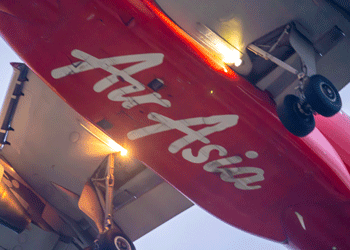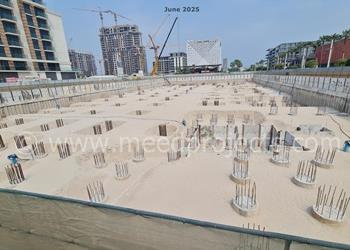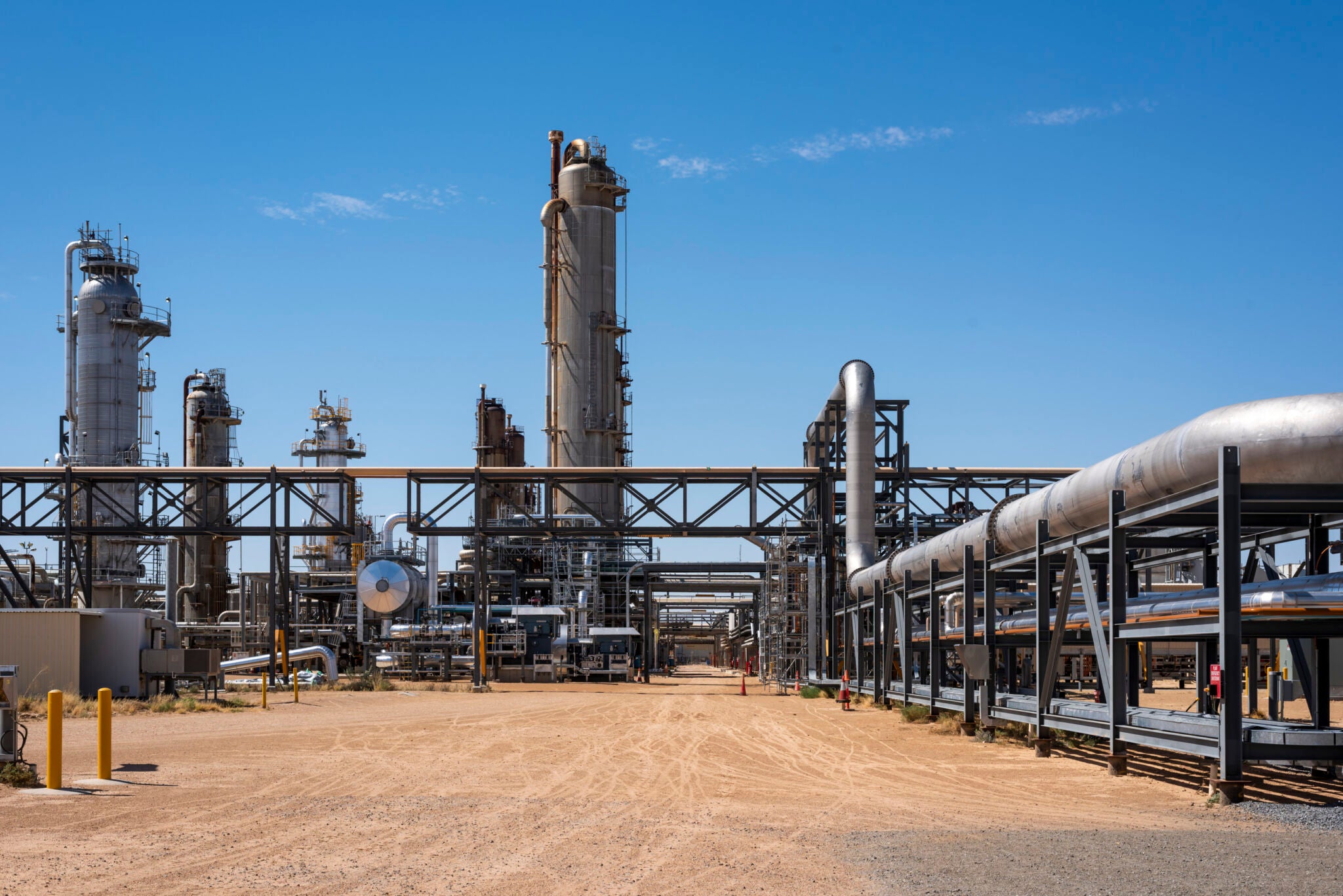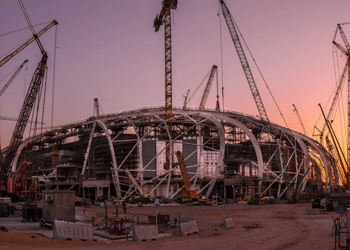An audience with Diriyah: The $63bn gigaproject opportunity
16 April 2024Hear first-hand from Diriyah Company about one of the world's most iconic projects and how your company can participate in its existing and future procurement opportunities.
This exclusive event will provide a detailed outlook into Diriyah’s development plans and the transformation of ‘The City of Earth’ under the Saudi 2030 Vision.
Gain key insights into available future procurement opportunities, how to work with Diriyah Company on its extensive project pipeline, and how to register and prequalify to participate in it.
Agenda:
1. The Saudi Arabia projects market in context – size, key projects, trends and future outlook
2. A detailed overview of the Diriyah gigaproject, its masterplan, progress and the more than $10.5bn-worth of construction work awarded to date
3. Key details of the $50bn+ projects pipeline including specific procurement opportunities, future materials and equipment demand, and how companies can register and help deliver the iconic giga development
4. An in-depth discussion with Diriyah Company on its requirements, vendor registration and procurement processes, and contracting frameworks
5. A live Q&A session where you will have the opportunity to ask questions directly to Diriyah Company
Time: Monday 22 April at 02:00 PM GST
Hosted by: Edward James, head of content and analysis at MEED
 A well-known and respected thought leader in Mena affairs, Edward James has been with MEED for more than 19 years, working as a researcher, consultant and content director. Today he heads up all content and research produced by the MEED group. His specific areas of expertise are construction, hydrocarbons, power and water, and the petrochemical market. He is considered one of the world’s foremost experts on the Mena projects market.
A well-known and respected thought leader in Mena affairs, Edward James has been with MEED for more than 19 years, working as a researcher, consultant and content director. Today he heads up all content and research produced by the MEED group. His specific areas of expertise are construction, hydrocarbons, power and water, and the petrochemical market. He is considered one of the world’s foremost experts on the Mena projects market.
Speakers:
Andrew Tonner, chief delivery officer, Diriyah Company
 Andrew Tonner is the chief delivery officer at Diriyah Company, with 35+ years of property development and construction experience. One of the first arrivals to the Diriyah Project in 2019, Andrew is now into his second spell with the company. He is currently responsible for construction delivery across 4 masterplans with a combined value of c $62 bn covering 75 km2. See more
Andrew Tonner is the chief delivery officer at Diriyah Company, with 35+ years of property development and construction experience. One of the first arrivals to the Diriyah Project in 2019, Andrew is now into his second spell with the company. He is currently responsible for construction delivery across 4 masterplans with a combined value of c $62 bn covering 75 km2. See more
Mohamed Thabet, commercial executive director, design and development, Diriyah Company
 Mohamed Thabet serves as the executive director of DevCo's commercial team. With a background in architecture and advanced studies in construction law, Mohamed brings a wealth of experience in managing complex construction contracts. His career spans roles in engineering, management firms and development, providing him with a comprehensive understanding of the construction industry supply chain. See more
Mohamed Thabet serves as the executive director of DevCo's commercial team. With a background in architecture and advanced studies in construction law, Mohamed brings a wealth of experience in managing complex construction contracts. His career spans roles in engineering, management firms and development, providing him with a comprehensive understanding of the construction industry supply chain. See more
Exclusive from Meed
-
 Bahrain’s willingness to disrupt takes flight with Air Asia
Bahrain’s willingness to disrupt takes flight with Air Asia14 November 2025
-
 Firms interested in Qiddiya high-speed rail revealed
Firms interested in Qiddiya high-speed rail revealed14 November 2025
-
 Meraas awards $120m Citywalk expansion project deal
Meraas awards $120m Citywalk expansion project deal14 November 2025
-
 Contractors prepare bids for Aramco gas compression project
Contractors prepare bids for Aramco gas compression project13 November 2025
-
 Aramco Stadium races towards completion
Aramco Stadium races towards completion12 November 2025
All of this is only 1% of what MEED.com has to offer
Subscribe now and unlock all the 153,671 articles on MEED.com
- All the latest news, data, and market intelligence across MENA at your fingerprints
- First-hand updates and inside information on projects, clients and competitors that matter to you
- 20 years' archive of information, data, and news for you to access at your convenience
- Strategize to succeed and minimise risks with timely analysis of current and future market trends

Related Articles
-
 Bahrain’s willingness to disrupt takes flight with Air Asia Colin Foreman
Bahrain’s willingness to disrupt takes flight with Air Asia Colin Foreman14 November 2025
 Commentary
Commentary
Colin Foreman
EditorAs the smallest economy in the GCC, Bahrain has long understood that its competitive edge lies in being agile and prepared to disrupt established economic models.
This proactive approach began decades ago with the deregulation of its telecoms sector, positioning it ahead of many GCC peers in opening that market. More recently, the same strategic foresight emerged in the fintech space with the early adoption of regulatory sandboxes and a supportive digital finance ecosystem.
Bahrain’s disruptive lens is now focused on the aviation sector. At the Gateway Gulf investor forum in Manama on 3 November, Bahrain signed a letter of intent with Malaysia-headquartered Capital A Berhad and Air Asia. The agreement covers the establishment of a hub in Bahrain as low-cost carrier Air Asia and its related businesses expand beyond Asia into new markets, including Europe and Africa.
A hub in Bahrain, which is located to the west of its existing hubs in Asia, will allow Air Asia to connect to the European and African markets, allowing it to develop a network that will be a low-cost alternative to the full-service airlines based in the Gulf that also bridge east and west, including Bahrain’s flag carrier Gulf Air.
Bahrain and Air Asia will not be competing on scale; instead, they will disrupt with lower prices. This agility will allow the kingdom to carve out a distinctive niche in an otherwise highly competitive market.
The strategic pivot is made viable by recent, essential capital investment in aviation infrastructure. A new terminal building was opened at Bahrain International airport in 2022. This has significantly increased passenger capacity and modernised operations, creating an attractive platform for a major international low-cost carrier like Air Asia to base its extensive operations.
https://image.digitalinsightresearch.in/uploads/NewsArticle/15090817/main.gif -
 Firms interested in Qiddiya high-speed rail revealed Yasir Iqbal
Firms interested in Qiddiya high-speed rail revealed Yasir Iqbal14 November 2025

Register for MEED’s 14-day trial access
Saudi Arabia's Royal Commission for Riyadh City, in collaboration with Qiddiya Investment Company and the National Centre for Privatisation & PPP, have received interest from over 145 local and international companies for a contract to develop the Qiddiya high-speed rail project in Riyadh.
These include 68 contracting companies, 23 design and project management consultants, 16 investment firms, 12 rail operators, 10 rolling stock providers and 16 other services firms.
The lead developers and contractors that have expressed interest are:
- Afcons Contracting Company / Shapoorji Pallonji (India)
- Al-Omaier Trading & Contracting (local)
- Al-Rashid Trading & Contracting Company (local)
- Al-Rawaf Contracting (local)
- Al-Ayuni Investment & Contracting Company (local)
- AlBawani (local)
- Al-Fahd Company (local)
- Alghanim International (Kuwait)
- Alkhorayef Water and Power Technologies (local)
- Almabani General Contractors (local)
- Amar (local)
- Anjal Al-Khair Contracting (local)
- Aviation Industry Corporation of China (China)
- Bouygues Travaux Publics (France)
- China Railway 18th Bureau Group (China)
- China Harbour Engineering Company (China)
- Built Industrial Company (local)
- Cap France (France)
- China Civil Engineering Construction Corporation (China)
- China Machinery Engineering Corporation (China)
- China Railway Construction Corporation (China)
- China Railway International Group Co (China)
- Copasa (Spain)
- Dineshchandra R. Agrawal Infracon (India)
- Dogus Insaat (Turkiye)
- EDECS Contracting (Egypt)
- El-Seif Engineering Contracting (local)
- El-Soadaa Group (Egypt)
- ElSewedy Electric (Egypt)
- Esnad Contracting (local)
- FCC Construccion (Spain)
- Freyssinet (France)
- Global Construction Development Solutions Company (local)
- Gulermak (Turkiye)
- Hassan Allam Construction (Egypt)
- Hyundai Engineering & Construction (South Korea)
- IC Ictas (Turkiye)
- Imathia Construccion (Spain)
- Kalyon Insaat (Turkiye)
- Kolin Construction (Turkiye)
- Larsen & Toubro (India)
- Makyol (Turkiye)
- Mapa Group (Turkiye)
- Marubeni (Japan)
- Mofarreh AlHarbi & Partners (local)
- Mota-Engil (Portugal)
- Mubarak Abdullah AlSuwaiket & Sons (local)
- Nesma & Partners (local)
- Nesma Infrastructure & Technology (local)
- Nurol Construction (Turkiye)
- Orascom Construction (Egypt)
- Saudi Pan Kingdom (local)
- Redco International (Egypt)
- Rio Contracting (local) (local)
- Rowad Modern Engineering (Egypt)
- Safari Company (local)
- Saipem (Spain)
- Salcef (Spain)
- Samama (local)
- Samsung C&T Corporation (South Korea)
- Saraya Al-Andalus (local)
- Syneox (Cobra) (Spain)
- The Arab Contractors (Egypt)
- Twaik Holding (local)
- UCC Holding (Qatar)
- Webuild (Italy)
- Yapı Merkezi (Turkiye)
Expressions of interest have also been submitted by the following design and project management consultants:
- Aecom (US)
- AtkinsRealis (Canada)
- Ayesa Engineering (Spain)
- CH2M (USA)
- Contrax International (UAE)
- El-Raeid Consulting Engineers (Egypt)
- Gensler (US)
- Geoharbour (China)
- Hatch (Canada)
- Hill International (US)
- Idom (Spain)
- Introsoft Solutions (India)
- Italferr (Italy)
- KL Consults Associates (Malaysia)
- Kunhwa Engineering and Consulting Company (South Korea)
- Marrs Global (UK)
- One Works (Italy)
- PPMDC (local)
- Rina Services (Italy)
- Sener (Spain)
- Surbana Jurong (Singapore)
- Systra (France)
- Typsa (Spain)
Equity investors that expressed interest in the Qiddiya high-speed rail project are:
- Aberdeen Investcorp (Bahrain)
- AlGihaz Holding (local)
- Almutlaq Real Estate Investment Company (local)
- Arj Holding (local)
- Foure Holdings (US)
- Itochu Corporation (Japan)
- Korea Overseas Infrastructure & Urban Development Corporation (Kind; South Korea)
- Lamar Holding (local)
- Mada International Holding (local)
- Meritz Financial Group (South Korea)
- MXB Investment (local)
- Plenary (Australia)
- Sojitz (Japan)
- Tamasuk (local)
- Vinci Concessions (France)
- Vision Invest (local)
The rail operators that submitted expressions of interest are as follows:
- Alsa Grupo (Spain)
- Alsaif Transportation Company (local)
- DB International Operations (Germany)
- Ferrovie dello Stato Italiane (Italy)
- Intertoll Europe (Hungary)
- Keolis (France)
- Moventis (Spain)
- MTR Corporation (Hong Kong)
- Ratp Dev (France)
- Renfe Operadora (Spain)
- Serco (UK)
- Transdev (France)
Interest in the project was also expressed by the following 10 rolling stock and systems suppliers:
- Alstom (France)
- CAF (Spain)
- Colas Rail (France)
- CRRC (Hong Kong)
- CRRC Changchun Railway Vehicles (China)
- Hitachi Rail (Japan)
- Hyundai Rotem (South Korea)
- Siemens (Germany)
- Stadler Rail (Switzerland)
- Talgo (Spain)
And finally, the other service providers that expressed interest in the project are:
- Al-Nasser (local)
- Alutec (Qatar)
- Alvarez & Marsal (US)
- Comatec (Finland)
- Concrete Technology Company (UAE)
- Generale Costruzioni Ferroviarie (Italy)
- Hogan Lovells (UK)
- Indra (Spain)
- Intellex Consulting Services (US)
- International SOS (UK)
- Najd Wire Industries Company (local)
- Rawasi Albina (local)
- Smart Directions (local)
- STC (local)
- Workforce Staffing Solutions (UAE)
- Zebraware (UK)
The firms submitted their expressions of interest on 12 October, as MEED reported.
The clients issued the notice to the market in September.
The Qiddiya high-speed rail project will connect King Salman International airport and King Abdullah Financial District (KAFD) in Riyadh with Qiddiya City.
Also known as Q-Express, the railway line will travel at speeds of up to 250 kilometres an hour, reaching Qiddiya in 30 minutes.
The project was previously planned to be developed under a conventional model, but will now progress under a public-private partnership (PPP) model.
The line is expected to be developed in two phases. The first phase will connect Qiddiya with KAFD and King Khalid International airport.
The second phase will start from a development known as the North Pole – which is understood to include the Public Investment Fund’s proposed 2-kilometre-tall tower – and travel to the New Murabba development, King Salman Park, central Riyadh and Industrial City in the south of Riyadh.
In November 2023, MEED reported that French consultant Egis had been appointed as the technical adviser for the project.
UK-based consultancy Ernst & Young is acting as the transaction adviser on the project. Latham & Watkins is the legal adviser.
Qiddiya is one of Saudi Arabia’s five official gigaprojects and covers a total area of 376 square kilometres (sq km), with 223 sq km of developed land.
https://image.digitalinsightresearch.in/uploads/NewsArticle/15090776/main.gif -
 Meraas awards $120m Citywalk expansion project deal Yasir Iqbal
Meraas awards $120m Citywalk expansion project deal Yasir Iqbal14 November 2025
Register for MEED’s 14-day trial access
Local real estate developer Meraas has awarded a AED440m ($120m) contract for the construction of the Northline residential project in the Al-Wasl area of Dubai.
The contract was awarded to the local GCC Contracting Company.
The project includes the construction of three residential buildings. Construction works are expected to begin shortly and the project is slated for completion by 2027.
The enabling works were undertaken by the local International Foundations Group.
The project is part of the recently announced City Walk expansion project.
In June, Merass announced the City Walk Crestlane project as it continued its expansion of the City Walk residential community.
City Walk Crestlane comprises two residential towers offering 198 one- to five-bedroom units.
The project is expected to be completed and handed over by the third quarter of 2028.
Meraas’ latest project contract award in Dubai is backed by heightened real estate activity in the UAE’s construction market. Schemes worth over $323bn are in the execution or planning stages, according to UK analytics firm GlobalData.
The company forecasts that the output of the UAE’s construction sector will grow by 4.2% in real terms in 2025, supported by developments in infrastructure, energy and utilities, as well as residential construction projects.
https://image.digitalinsightresearch.in/uploads/NewsArticle/15090114/main.png -
 Contractors prepare bids for Aramco gas compression project Indrajit Sen
Contractors prepare bids for Aramco gas compression project Indrajit Sen13 November 2025

Register for MEED’s 14-day trial access
Saudi Aramco is making progress with the main contract tendering process for a project to boost gas compression capacity at the Shedgum and Uthmaniya processing plants in the kingdom’s Eastern Province.
The Shedgum and Uthmaniya plants currently receive approximately 870 million cubic feet a day (cf/d) and 1.2 billion cf/d of Khuff raw gas, respectively.
Through this multibillion-dollar project, Aramco aims to increase the compression and processing capacity of the two plants, as well as to construct new pipelines to enhance gas transport.
Contractors are preparing bids for several engineering, procurement and construction (EPC) packages of the Shedgum and Uthmaniya gas compression capacity expansion project. Aramco has set a bid submission deadline of 17 November, according to sources.
The Saudi energy giant is understood to have started the solicitation of interest process for the main EPC contract tendering exercise in the fourth quarter of last year.
Aramco then issued the tenders for the EPC packages of the scheme during the second quarter of this year and set an initial bid submission deadline of 17 August, the sources said.
In line with its aim of increasing gas production and processing capacity by 60% by 2030, with 2021 as its baseline, Aramco is investing significant capital in gas projects in the kingdom this year.
Aramco’s capital expenditure (capex) in the third quarter of 2025 stood at $12.55bn, a marginal year-on-year increase of 2%. For the first nine months of the year, the firm registered capex of $37.41bn, an increase of 3.38% compared to the same period last year.
The company previously announced capital investment guidance in the range of $52bn-$58bn for 2025, excluding around $4bn of project financing.
ALSO READ: Aramco turns attention to strategic projects
 READ THE NOVEMBER 2025 MEED BUSINESS REVIEW – click here to view PDF
READ THE NOVEMBER 2025 MEED BUSINESS REVIEW – click here to view PDFMena players up the ante in global LNG production race; Investment takes UAE non-oil economy from strength to strength; Project finance activity draws international lenders back to market
Distributed to senior decision-makers in the region and around the world, the November 2025 edition of MEED Business Review includes:
> AGENDA 1: Gulf LNG sector enters a new prolific phase> INDUSTRY REPORT 1: Region sees evolving project finance demand> INDUSTRY REPORT 2: Iraq leads non-GCC project finance activity> GREEN STEEL: Abu Dhabi takes the lead in green steel transition> DIGITISATION: Riyadh-based organisation drives digital growth> UAE MARKET FOCUS: Investment shapes UAE growth storyTo see previous issues of MEED Business Review, please click herehttps://image.digitalinsightresearch.in/uploads/NewsArticle/15075053/main4642.jpg -
 Aramco Stadium races towards completion Colin Foreman
Aramco Stadium races towards completion Colin Foreman12 November 2025

Register for MEED’s 14-day trial access
The Aramco Stadium in Khobar is moving forward at an impressive pace as the fast-track project races towards completion in 2026.
The 47,000-seat stadium will be the new home for the Aramco-owned Al-Qadsiah Club and a key venue for the 2027 AFC Asian Cup and the 2034 Fifa World Cup.
The project’s progress stems from detailed planning and an accelerated delivery strategy. The project was conceived in May 2023, with the design process, managed by Aramco, commencing shortly thereafter.
“We completed the design within six months,” said Mohammed Subhi, the Aramco Stadium’s project manager.

The project advanced quickly due to thorough planning and a fast-track delivery approach. Initiated in May 2023, the design phase—overseen by Aramco—was completed within six months
An early engagement approach with the main contractor – a joint venture of Besix and Al-Bawani – was instrumental in maintaining momentum. This partnership began early in 2024, allowing for collaborative input on critical construction elements.
This upfront collaboration minimised pre-construction time, ensuring a rapid transition to site work.
Engineering challenges
 The stadium’s architectural design, inspired by the natural whirlpools of the Gulf and featuring interwoven transparent sails, presents significant engineering challenges, particularly in the structural steel and façade work. For spectator comfort, the stadium is equipped with full cooling systems and designed to the highest international standards.
The stadium’s architectural design, inspired by the natural whirlpools of the Gulf and featuring interwoven transparent sails, presents significant engineering challenges, particularly in the structural steel and façade work. For spectator comfort, the stadium is equipped with full cooling systems and designed to the highest international standards.Logistics management is another crucial facet of the project, which is located in central Khobar. With thousands of workers on site, the movement of materials is tightly controlled to minimise community disruption.
“We control how many trucks can enter the site and at what time. For example, we cannot cast concrete during the day. It has to be after 6pm, up until the early morning,” said Subhi.
A key priority on site is health and safety, an area where the organisation’s legacy from its oil and gas operations is clearly visible. Subhi explains that the principle of health and safety is part of the company’s DNA and is embodied in the deployment of advanced technology and rigorous standards, which have collectively resulted in over 10 million safe working hours to date.
The project employs a sophisticated Smart Safety Command Centre (SCC), which utilises artificial intelligence-based monitoring and 24/7 surveillance. One key feature of the centre is the crane collision prevention system – a key technological advancement in heavy machinery coordination and a first for the region.
“We have tower cranes and crawler cranes talking to each other. The anti-collision system means cranes talk to each other without human interference, and they automatically shut down when they are too close to each other,” said Subhi.

A key technological advancement is the crane collision prevention system, which means the cranes talk to each other and shut down if they become too close
In addition to ground operations, the project is leveraging aerial technology to mitigate risk in high-altitude work.
“We have used drones for the inspection of the cranes and inspection of the steel structure itself to minimise the risk of working at height,” said Subhi.

Drones have been adopted on-site to mitigate the risk of working at height
Worker welfare
The project’s commitment extends beyond mere regulatory compliance to comprehensive worker welfare, establishing a high standard for construction sites in the region.
With current staffing reaching approximately 11,000 direct and indirect workers, welfare provisions are a core priority, linking directly back to Aramco’s corporate standards.
In a region where extreme heat is a constant challenge, the project has implemented advanced heat stress management protocols. This includes the installation of heat sensors with alarm systems, mandatory work stoppage during peak heat hours and regular briefings on heat exhaustion symptoms. Fully air-conditioned rest areas are provided for breaks and meals.
Aramco is also committed to developing national talent. A significant proportion of the staff are young, and about 20% of the team are women.
The relationship with the joint-venture contractor is defined by collaboration rather than traditional client-contractor hierarchy. “We are one team, working together,” said Subhi. This approach has fostered a cooperative environment that is accelerating the on-site progress towards the 2026 completion goal.
https://image.digitalinsightresearch.in/uploads/NewsArticle/15073939/main.gif


